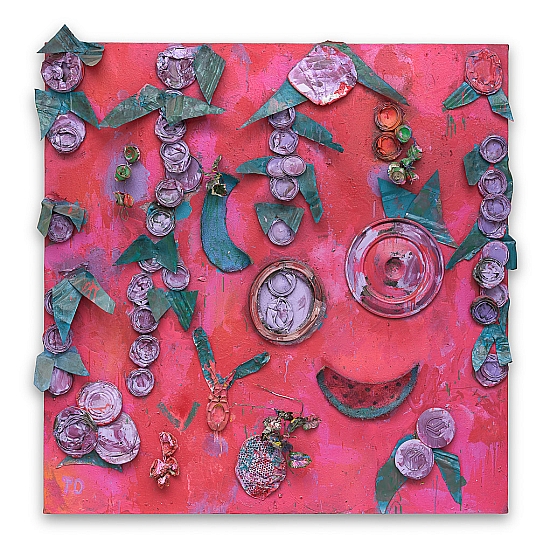In a continued exploration of the still-life genre, Dial borrowed the stock image of grape clusters so ubiquitous in the fine-art tradition and recast them to portray a horrific chapter in African American history—the practice of lynching blacks in the South. Calling the series Strange Fruit, in reference to the Billie Holiday song of the same title, he appropriated a major trope from the history of Western painting and recolonized it with the politics of black revolutionary consciousness.
The original version of “Strange Fruit” was written in the late 1930s by Abel Meeropol, a Jewish school teacher and union activist from the Bronx who later set his poem to music. With Holiday’s performance of the song, it soon became enshrined in the popular imagination as a symbol of the racist horrors suffered by African Americans:
Southern trees bear a strange fruit
Blood on the leaves and blood at the root
Black body swinging in the southern breeze
Strange fruit hanging from the poplar trees
Pastoral scene of the gallant South
The bulging eyes and the twisted mouth
Scent of magnolia sweet and fresh
And the sudden smell of burning flesh!
Here is a fruit for the crows to pluck
For the rain to gather, for the wind to suck
For the sun to rot, for a tree to drop
Here is a strange and bitter crop
In the series’ second piece, subtitled Desserts, Dial creates a companion to Alabama Grapes. In Desserts, the once-abundant grapevines have been torn apart, strewn about the canvas and spattered with blood-red paint. Mangled grape leaves made of snipped tin, carpet scraps, and old artificial greenery are also bloodstained. Joining the fattened paint-can lids that form Dial’s grapes are other crushed metal objects, including an old hubcap. A recurring motif in the lexicon of southern yard art, the shiny, rounded form of the wheel cover usually symbolizes the cyclical motion of life, but here it is rendered useless and immobilized. A watermelon, Dial’s familiar reference to the black rural South, also makes an appearance in this sinister symbolic scene of death, dismemberment, and destruction. A vision of life’s bounty trampled and left to decay, the painting conjures an eerie connection to Langston Hughes’s poem “A Dream Deferred,” in which Hughes laments the decimation of African American hopes and desires, the literal wasting away of black vision amidst racist oppression. Also, making reference to the fates of untended, unharvested grapes, Hughes posed insistent questions:
What happens to a dream deferred?
Does it dry up
Like a raisin in the sun?
Or fester like a sore—
And then run?
